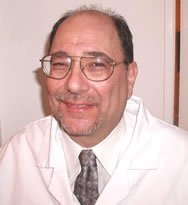ABSTRACT
In this article, the fourth in a series reviewing the role of food workers in foodborne outbreaks, background information
on the presence of enteric pathogens in the community, the numbers of organisms required to initiate an infection, and the
length of carriage are presented. Although workers have been implicated in outbreaks, they were not always aware of their
infections, either because they were in the prodromic phase before symptoms began or because they were asymptomatic
carriers. Pathogens of fecal, nose or throat, and skin origin are most likely to be transmitted by the hands, highlighting the
need for effective hand hygiene and other barriers to pathogen contamination, such as no bare hand contact with ready-to-eat
food. The pathogens most likely to be transmitted by food workers are norovirus, hepatitis A virus, Salmonella, Shigella, and
Staphylococcus aureus. However, other pathogens have been implicated in worker-associated outbreaks or have the potential
to be implicated. In this study, the likelihood of pathogen involvement in foodborne outbreaks where infected workers have
been implicated was examined, based on infectious dose, carriage rate in the community, duration of illness, and length of
pathogen excretion. Infectious dose estimates are based on volunteer studies (mostly early experiments) or data from outbreaks.
Although there is considerable uncertainty associated with these data, some pathogens appear to be able to infect at doses as
low as 1 to 100 units, including viruses, parasites, and some bacteria. Lengthy postsymptomatic shedding periods and excretion
by asymptomatic individuals of many enteric pathogens is an important issue for the hygienic management of food workers.
This article is the fourth in a series of several reviewing the role of food workers in foodborne outbreaks. Members of the Committee on Control of Foodborne Illnesses of the International Association for Food Protection analyzed 816 foodborne disease outbreaks in which food workers were implicated as the source of contamination (80, 194, 195) and grouped these outbreaks into different types of contamination scenarios. Specifically, this review deals with the doses of pathogens required to infect individuals. These pathogens have been or could be involved in foodborne disease outbreaks through worker infection or contamination. It also describes the incubation period, duration, symptomatic and asymptomatic carriage rates, and persistence of pathogen excretion. For the purposes of this report, "ill" is defined as an individual having unambiguous symptoms that alert the worker that handling food and food contact surfaces is not appropriate. "Asymptomatic" is defined as the condition of individuals who are not obviously ill but are colonized and shedding pathogens periodically; this can be for a short time before the illness develops (prodrome), subsequent to the illness in the recovery phase, or a long-term carrier. These individuals, their coworkers and management are typically unaware of their condition, and they are capable of contaminating the kitchen environment over a period of time unless they practice meticulous hygiene or use barriers to prevent pathogen contamination. Interestingly, from the review, an almost equal number of outbreaks occurred where workers were asymptomatic (a few were chronic excretors) as those where they were ill. Therefore, it is important to recognize the risks of infected but apparently well employees.
INFECTIVE DOSES FOR FOODBORNE AND OTHER ENTERIC PATHOGENS
. . .Continue to read rest of article (PDF).
Dr. Ewen Todd is a Food Safety Expert with over 45 years of knowledge and experience in general food safety and Food Microbiology Issues. Specifically, he has extensive experience the reporting and surveillance of Foodborne Disease, as well as development of analytical methods for identifying foodborne pathogens. As a result of his work with the industry and his knowledge of foodborne disease, Dr. Todd has influenced research programs and regulatory approaches taken by the Health Protection Branch of Health Canada. In the US, he held the position of Director of the National Food Safety and Toxicology Center and the Food Safety Policy Center at Michigan State University.
©Copyright - All Rights Reserved
DO NOT REPRODUCE WITHOUT WRITTEN PERMISSION BY AUTHOR.










